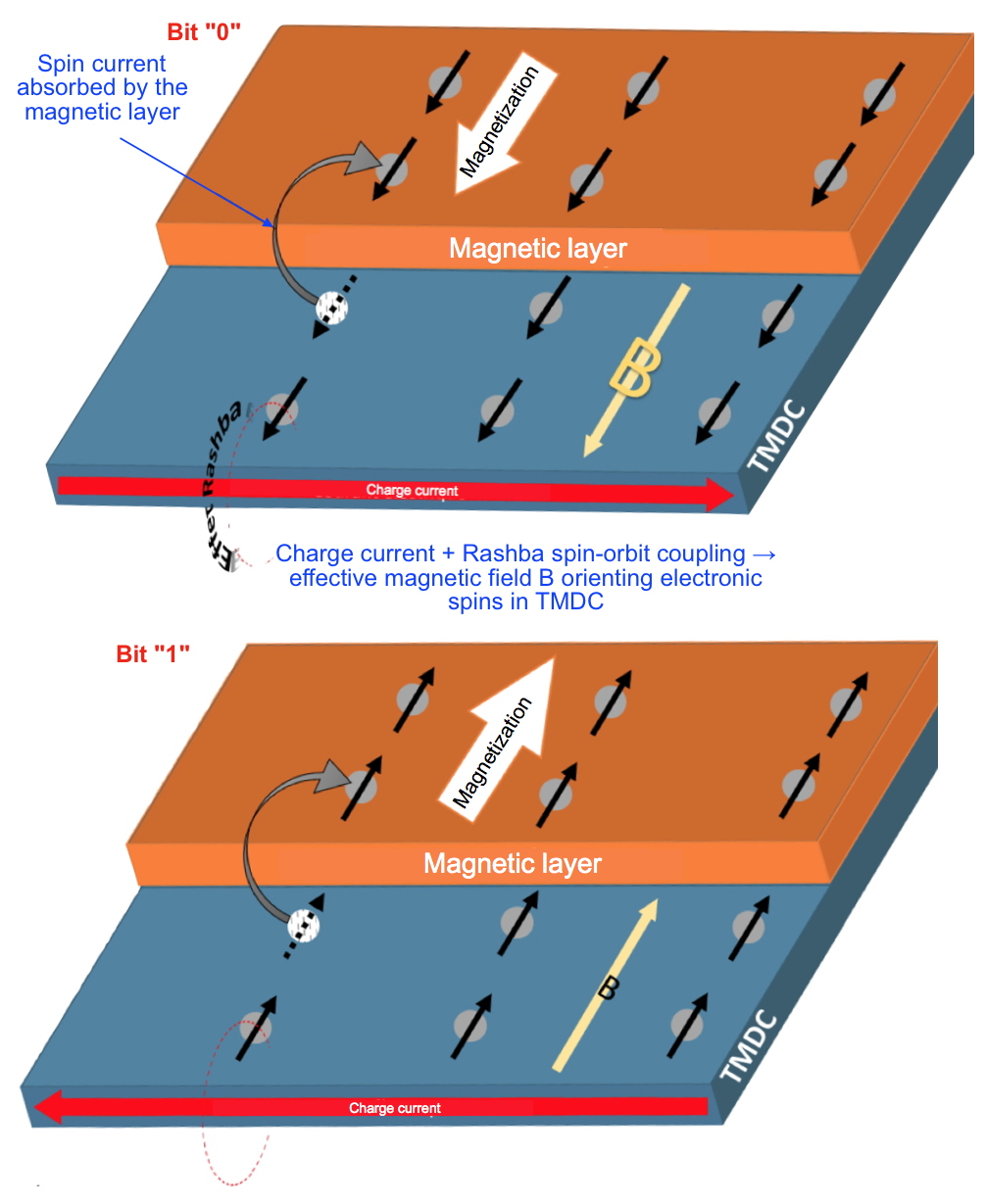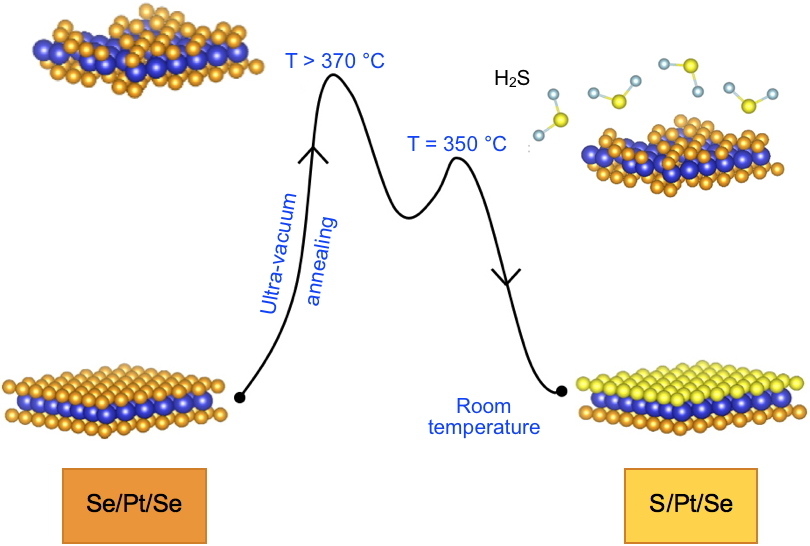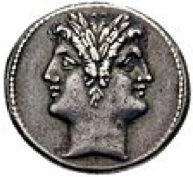The ultimate goal of this research is to intensify the
Rashba spin-orbit coupling in TMDC, which generates a spin accumulation from a simple charge current flowing in the material (
Figure 1). The accumulated spins diffuse to generate a spin current that can be absorbed by a magnetic layer in contact with the TMDC, causing the magnetization of this layer to reverse. Thanks to the Rashba spin-orbit coupling, the application of an electric current allows to orientate the magnetization of the magnetic layer and thus to write an information bit "0" or "1". The stronger the Rashba coupling, the more intense the spin current generated and the easier it is to reverse the magnetization of the layer, thus limiting the energy consumption of this type of magnetic memory.

Figure 1. Effect of Rashba spin-orbit coupling in a TMDC layer and writing of the magnetic layer.
Intrinsically, the TMDC PtSe
2 has a strong spin-orbit interaction (thanks to the heavy platinum atoms). However, there was a major problem in the choice of this material because of its vertical symmetric structure that limits the Rashba coupling. Indeed, SePtSe is composed of two identical layers of chalcogen Se enveloping a central layer of metal Pt (
Figure 2, bottom left).
IRIG researchers have succeeded in removing this obstacle by substituting the Se atoms in the top layer, by means of controlled sulfurization under H
2S atmosphere, to make an asymmetric two-dimensional material, called Janus S/Pt/Se (
Figure 2, bottom right). This new material shows a strong Rashba coupling.

Figure 2. Pictorial scheme for the transformation of PtSe2 into SPtSe.
Atoms: Pt blue, Se orange, S yellow.
In order to form the Janus SPtSe, the TMDC PtSe
2 material is first heated to 370°C to generate vacancies in the top layer. This layer is then exposed to a controlled temperature of 350°C under H
2S atmosphere to fill these gaps and obtain the substitution of Se by S. Upon cooling, the new 2D compound reorders. It is obviously necessary to master perfectly the steps of formation of the layers of S, Pt, and Se atoms in order to exploit at best the properties of the Janus SPtSe from the spintronics point of view. These steps have been studied thanks to the specific means of characterization that exist within IRIG. The formation steps of the Janus compound have been methodically characterized
in situ and
operando by grazing incidence synchrotron X-ray diffraction at the ESRF. The two-sided atomic composition of Janus has been verified ex situ by angle-resolved X-ray photoemission spectroscopy.
This Janus compound is a first experimental realization exhibiting strong Rashba spin-orbit coupling that could improve the writing efficiency of spin-orbit torque memories (
SOT-MRAM) and limit power consumption.
 Janus.
Janus. The reference to the two-faced Greek God Janus is due to the typical structure of the material in which the two chalcogen layers (S and Se) around the Pt layer have a different chemical nature.
Rashba spin-orbit coupling. This relativistic effect, in which an electric field is felt as a magnetic field by the spin-orbit coupling, allows to generate a spin current from a charge current. It allows to sort dynamically the spins (up and down) in the material. For example, in SPtSe, the symmetry breaking with respect to the plane of platinum atoms creates a vertical electric dipole. The electric field thus created, coupled to the platinum which is a heavy element, generates a strong Rashba spin-orbit coupling. In this way, such a monolayer could be used in a magnetic memory of the
SOT-MRAM (Spin-Orbit Torque Magnetic Random-Access Memory)type for writing the magnetic storage layer.